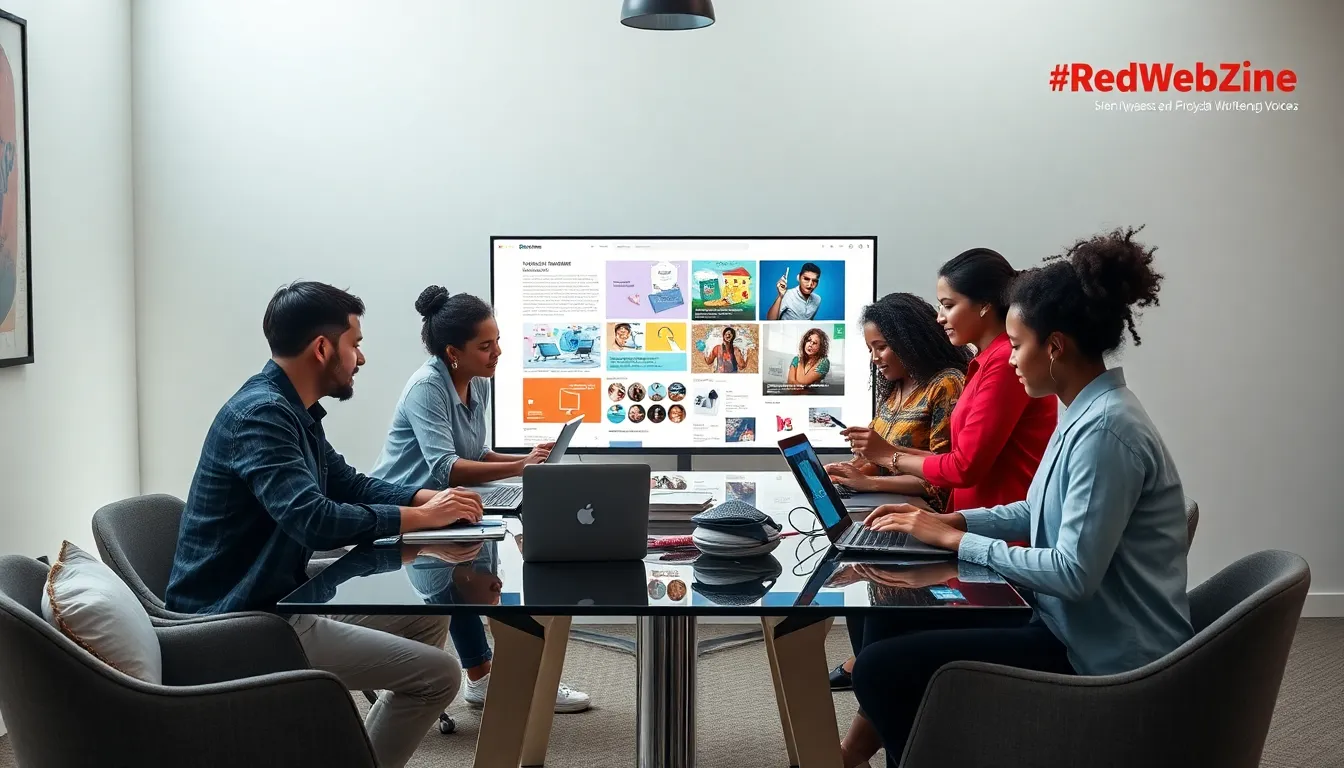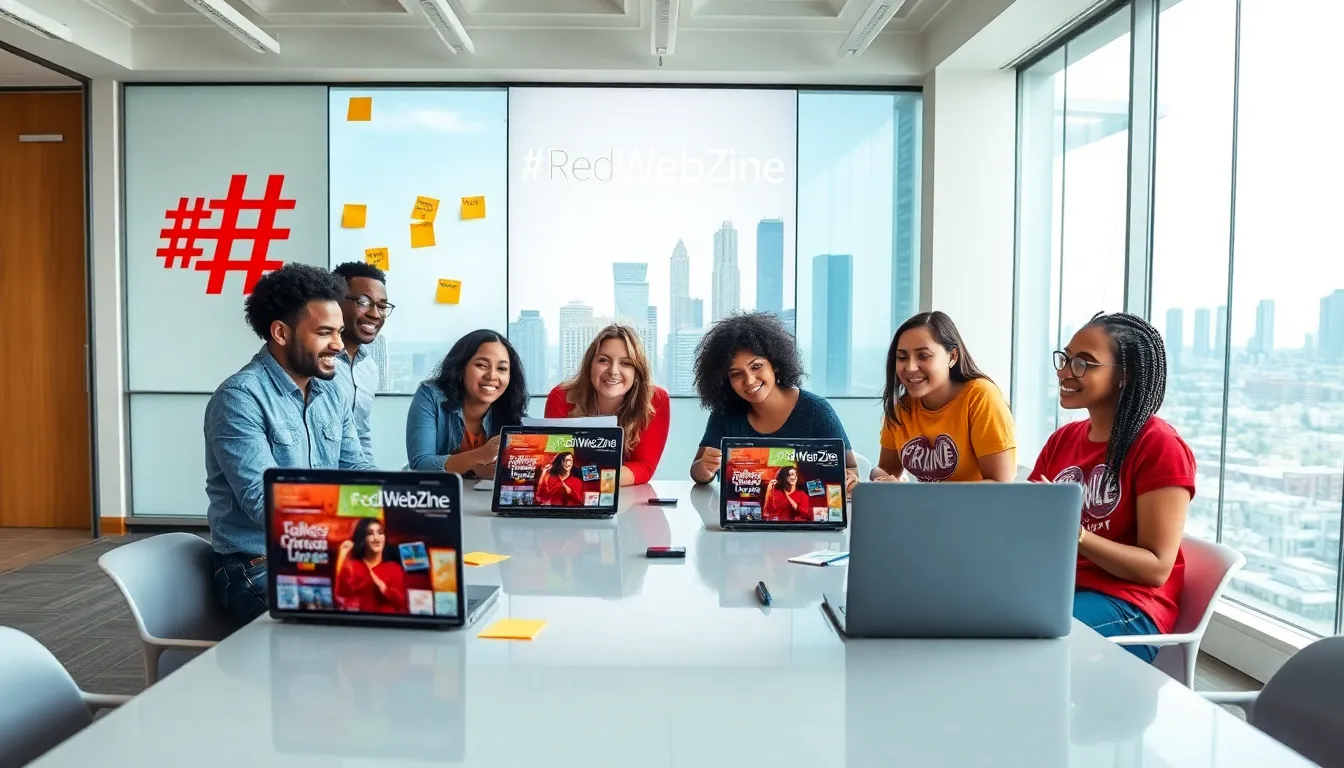Table of Contents
ToggleHave you ever stumbled upon a digital realm brimming with creativity, connection, and perhaps a sprinkle of chaos? Enter #RedWebZine. This isn’t just another online platform: it’s a vibrant movement that’s redefining the landscape of digital content. If you think blogs are boring, think again. Join us as we investigate into the world of #RedWebZine, where innovation meets inspiration, and memes collide with masterpieces.
What Is RedWebZine?

#RedWebZine represents a collaborative online platform that thrives on user-generated content. Born from the need to express diverse voices, it seeks to amplify creativity and foster a sense of community among digital nomads and internet enthusiasts alike. Essentially, it’s where writers, artists, and thinkers converge to share their ideas, stories, and experiences with the world. From articles to artwork, this zine embodies the democratization of content, asserting that everyone has a voice worth hearing.
The Significance of the RedWebZine Movement
The #RedWebZine movement marks a departure from traditional media. Instead of being dictated by a handful of corporations, this platform empowers individuals to tell their stories as they see fit. In an age where information is often filtered and monetized, #RedWebZine champions transparency and authenticity. The initiative serves as a rallying point for those passionate about creative freedom, encouraging people to express themselves without fear of censorship. By doing so, it nurtures a culture of openness and innovation, making waves in the digital ecosystem.
Key Features of RedWebZine Content
Content on #RedWebZine is as eclectic as its users. From thought-provoking essays to vibrant visual art, each piece is a testament to the creativity of the contributors. Here are some standout features:
Collaborative Spirit
Creative synergy thrives here. Users often collaborate on projects, blending perspectives to create unique works that resonate on multiple levels.
Community Focus
Unlike many platforms prioritizing clicks over connection, #RedWebZine emphasizes building a community. Users can engage with one another, fostering a supportive environment where ideas flourish.
Diversity of Topics
Whether it’s exploring niche subcultures, discussing social justice issues, or sharing personal anecdotes, the range is vast. This diversity attracts a broad audience, ensuring there’s something for everyone.
How to Engage with RedWebZine
Engaging with #RedWebZine is not only encouraged: it’s celebrated. Here’s how anyone can jump in:
- Contribute Your Voice: Every opinion matters. Interested individuals can submit articles, art, or photography. Sharing one’s unique perspective can ignite meaningful conversations.
- Participate in Discussions: Users can join forums or comment sections to discuss pieces, allowing for deeper dialogues. It’s an excellent place to connect with like-minded individuals.
- Follow and Share: Staying connected is vital in a fast-paced digital world. Following #RedWebZine on various platforms ensures users stay updated on new content and can share their favorites with friends, expanding the community further.
The Impact of RedWebZine on Digital Culture
Since its inception, #RedWebZine has left an indelible mark on digital culture. It has paved the way for new forms of storytelling, where creativity knows no bounds. Besides, it challenges conventional ideas about publishing, urging people to think critically about the content they consume and create. The movement promotes interactivity, turning passive readers into active participants. So, this shift has made digital content more dynamic, encouraging users to investigate deeper and engage with materials instead of skimming through them. With the rise of #RedWebZine, a new age of digital literacy emerges, where critical thinking becomes paramount.
Challenges and Criticisms of RedWebZine
While the #RedWebZine movement boasts numerous advantages, it isn’t without its challenges. Critics argue that the unrestricted nature of user-generated content can lead to misinformation and a lack of quality control. But, it is essential to recognize the community’s responsibility to sift through content critically. Also, as the platform grows, maintaining a cohesive identity amidst diverse contributions can prove difficult. Yet, these criticisms also open up dialogues about content curation and the future of online platforms, pushing the community to develop better practices for quality assurance.




